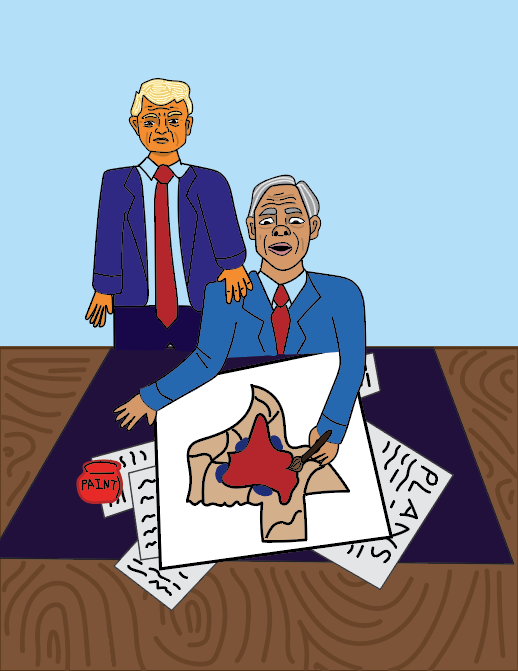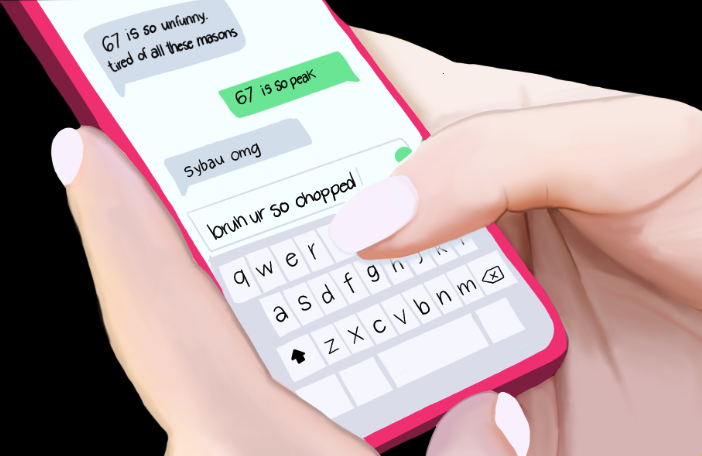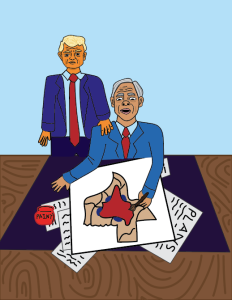Media Literacy
May 26, 2018
In an age of fake news, social movements, and biased news outlets, media literacy has become a more prevalent topic. The concept centers around the idea of the public absorbing, analyzing, and understanding media and separating legitimate sources from illegitimate.
With media literacy the goal is to properly educate the public so they are able to make informed decisions and form their opinions.
“[Media literacy] can help a person know the whole truth,” senior Jack Brady said. “The news isn’t supposed to make us feel a certain way on a topic, it’s their duty to give us the facts and we make our own decision on what to do with them.”
With the recent increase in involvement of the youth in politics and protests, more people have questioned the awareness that teenagers have to comprehend media.
“I think people our age are always online and are reading Instagram captions, Facebook comments, and tweets,” senior Bryan Moreno said. “We need to be able to understand and interpret different people’s sense of humor and intent when reading the author’s writing.”
For English teacher Vicki Hebert, the struggle with media literacy for adults is due to a generational gap.
“I think, for my generation and for older generations, we have a tendency to trust media too much because we grew up with media that was trustworthy and we didn’t have to find out where the source of the information came from,” Hebert said. “This I think leaves a lot of people in my generation with a big blind spot.”
Although accurate news sources and being well-informed is important to many individuals, people still continue to avoid the news.
“People are deemed anti-news because they view the news as a negative resource, as the headlines and major stories report mainly on what is wrong in the world today,” senior Caroline Garcia said.
To Brady, the media can be daunting for some members of the public, especially when it challenges their belief system.
“I think that no one really is anti news,” Brady said. “I think people are more anti-wrong. People want to be right and whenever some big media source is going after their belief that’s when people get angry.”
In social studies teacher John Rodriguez’s opinion, in order for people to become more engaged in the news they must acknowledge and understand that they are being affected by the news.
“Even more so today, we see a notification or a post or see a 30-second clip and we are instant experts on an issue or story,” Rodriguez said. “We need to, again, find space and a time to reflect and really analyze what is going on before we click, like, comment, or share. We don’t do this enough.”
As an avid news reader, Garcia finds articles from notable websites to be the most convenient for her because it is readily available and trusted.
“I think we can more accurately discern fact from fake news simply by putting in more effort into finding reliable sources, and going into greater depth by checking those updates of those stories,” Garcia said.
In Hebert’s opinion newspapers may be a slower means of media communication, but they are effective because of their reliability.
“Of course [with] newspapers and magazines you need to know what their bias is,” Hebert said. “I think that it’s important to get your media from different places not just trust one and one only, but to look at different papers and listen to television, and radio and social media.”
Although it is known that many news sources are biased, discerning bias can be difficult.
“Narrowcasting is recognizable if various stances on the issues are unaddressed,” Garcia said. “When the flow of news is not suitable to a variety of viewers no matter the age, gender, or ethnic composition.”
From personal experience, Brady notes some important steps to take when consuming news to recognize.
“Look for keywords, how clear does it state it’s position, how much do you agree with it,” Brady said. “Does it give you a feeling? Usually when it does it’s trying to play with your emotions to gain a reaction.”
As a student who is intrigued by the news, Moreno has read and done a lot of analysis on different news outlets as well as fact-checked his sources regularly.
“The reader needs to go and do research for themselves if they aren’t familiar with a certain topic,” Moreno said. “It may sound like a lot of work but it allows one to be a lot more accurate and informed.”
Garcia agrees that by reading various outlets of media with difference biases she can learn about people’s opinions.
“It is very easy for people to accept bias when the stance or policy is in agreeance of their own,” Garcia said. “However, if citizens are sheltered to their own stances, they are never fully exposed to other opinions and arguments present in society.”
As a proponent of media, Moreno finds media literacy to be necessary to keeping society bound together by facts.
“Stories [with fake news] should not be shared on major news outlets because they only feed into communities’ anxieties and prevents them from being a unified group,” Moreno said.
Rodriguez receives most of his news from online sites and broadcast journalism rather than a newspaper.
“Every single day, today’s youth are surrounded by multiple points of literacy, yet they don’t exactly see that those tools and methods as a form of literacy,” Rodriguez said. “Neither do the adults. We must fix that, come together, and discuss how to better use these tools.”
Hebert feels that understanding humanity, that people have a difference in belief, and why they have certain opinions is essential to embrace bias and use it to her advantage.
“The only way you can make informed decisions about this world and about what you are going to do to make it better is to have good information,” Hebert said.








